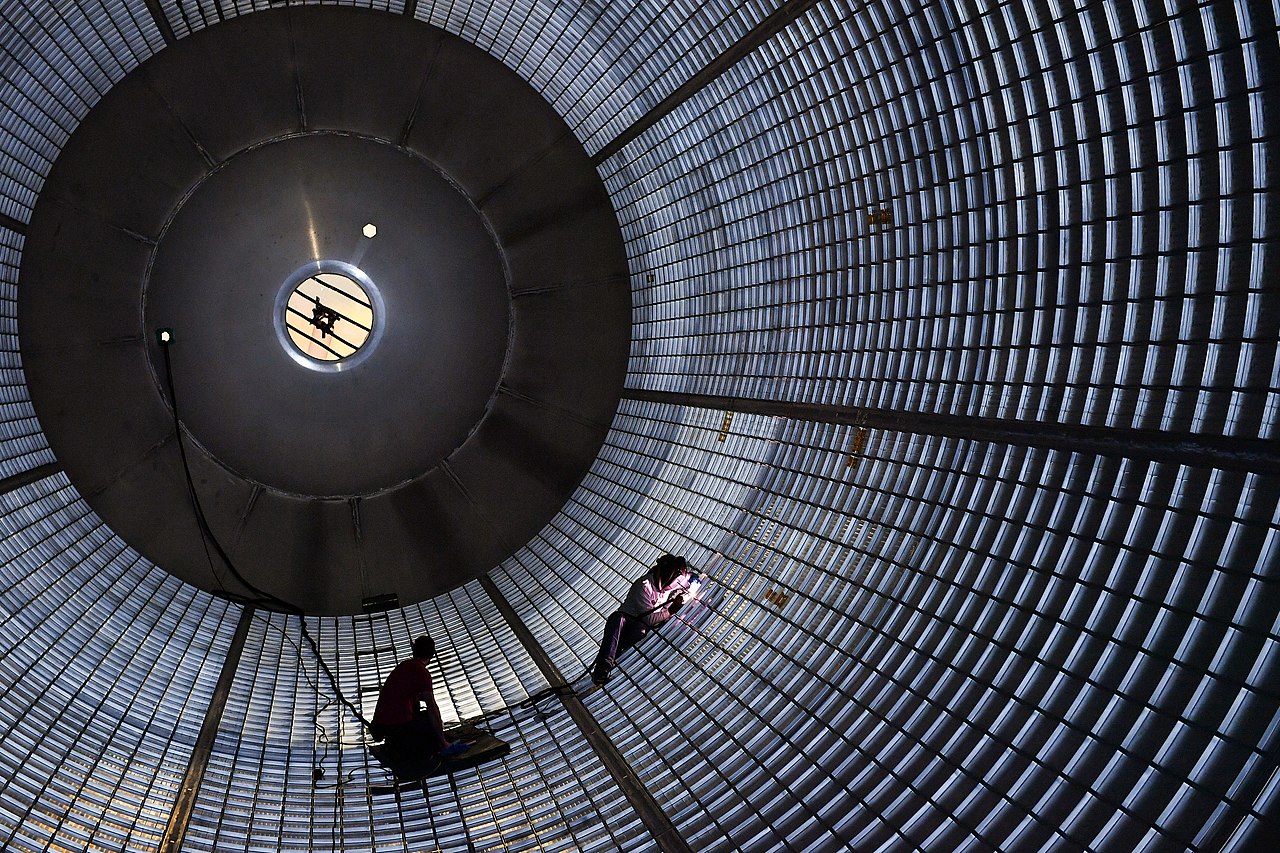Comprehensive Tank Welding Assessment for Industrial Safety And Security and Regulatory Compliance
Making sure industrial safety and regulative compliance within the realm of storage tank welding inspections is a crucial element of preserving functional stability and mitigating prospective threats. The precise assessment of weld quality, material thickness, and overall storage tank problem is vital in protecting against environmental hazards and structural failings. By diving into the intricacies of comprehensive tank welding inspections, a much deeper understanding emerges of the complex strategies used to support sector criteria and promote safety methods.
Importance of Storage Tank Welding Assessments
Performing thorough and periodic container welding inspections is important in making certain the architectural stability, safety and security criteria, and regulative conformity of commercial storage tanks. These assessments play a crucial role in determining any prospective defects or weak points in the welded joints that can jeopardize the total integrity of the tank. By spotting these concerns beforehand, business can take positive actions to resolve them without delay, thereby preventing expensive fixings, environmental contamination, or, in the worst-case circumstance, tragic failures.
Normal tank welding examinations additionally aid companies conform with sector laws and criteria stated by authorities such as the American Petroleum Institute (API) or Occupational Safety And Security and Health Administration (OSHA) Failure to meet these requirements can lead to fines, legal repercussions, and even the suspension of operations. Tank Welding Inspection Service. For that reason, investing in extensive container welding assessments not only safeguards the well-being of employees and the surrounding atmosphere however additionally safeguards the business's track record and profits in the lengthy run
Key Components of Weld High Quality Evaluation
Making certain the top quality of welds entails a precise assessment of crucial components that add to the architectural stability and dependability of commercial tanks. One vital element of weld top quality evaluation is the assessment of weld penetration. Appropriate infiltration is important as not enough infiltration can bring about weld defects and endanger the stamina of the joint. In addition, the weld's account should be assessed to make sure that it satisfies the specified demands in terms of shapes and size. The existence of any kind of interruptions, such as fractures, porosity, or insufficient combination, must be thoroughly inspected as these can compromise the weld and increase the possibility of failing. In addition, the general weld look is likewise a crucial part of top quality assessment, as it can show the visibility of issues or disparities in the welding procedure. By adequately examining these crucial components, examiners can assist ensure that bonded joints fulfill the required standards for safety and security and governing conformity in commercial container construction.
Material Density Evaluation Techniques
In the context of weld quality analysis, an indispensable aspect to consider is the use of product density analysis strategies. Precise dimension of product density is important in making sure the architectural integrity and safety of bonded tanks. Numerous non-destructive testing (NDT) methods are used for examining product thickness, including ultrasonic screening, radiographic testing, and magnetic particle inspection. Ultrasonic testing includes making use of high-frequency sound waves to determine material thickness by measuring the moment considered the sound waves to travel with the product and mirror back. Radiographic testing utilizes X-rays or gamma rays to create images revealing material density. Magnetic bit inspection works for identifying surface area and near-surface flaws that might influence material thickness. These strategies not just aid in evaluating the density of products yet likewise aid in identifying any possible problems or stoppages that can jeopardize the weld high quality and total stability of the tank framework. By using these product thickness analysis methods, industries can make sure compliance with security standards and regulations, thereby improving general operational security and dependability.
Container Problem Examination Techniques
An essential facet in preserving the stability find out and security of bonded containers is the comprehensive evaluation of storage tank problems through trusted inspection methods. Storage tank condition evaluation techniques play a crucial role in making sure the architectural soundness and operational performance of commercial containers. Regular evaluations utilizing these approaches are important for stopping devastating failings and making certain the long-lasting dependability of bonded containers.
Benefits of Routine Examination Practices
Regular assessment methods not just secure versus potential concerns spotted throughout container problem examination methods however likewise act as aggressive actions in upholding the structural integrity and functional performance of welded storage tanks. By performing normal inspections, commercial facilities can recognize any kind of signs of rust, splits, leaks, or other flaws in the container welds promptly. This early discovery makes it possible for timely repair work or maintenance treatments, preventing small problems from intensifying right into bigger, more costly problems that might jeopardize safety and security or bring about regulative non-compliance.

Conclusion

In final thought, thorough tank welding inspections are important for ensuring industrial safety and regulative compliance. By carrying out normal inspections and evaluations of weld top quality, material thickness, and storage tank problem, organizations can determine possible risks and avoid pricey crashes. Executing a positive strategy site here to inspection methods can assist keep the structural stability of containers, protect the environment, and guarantee the security of employees and the bordering area.
